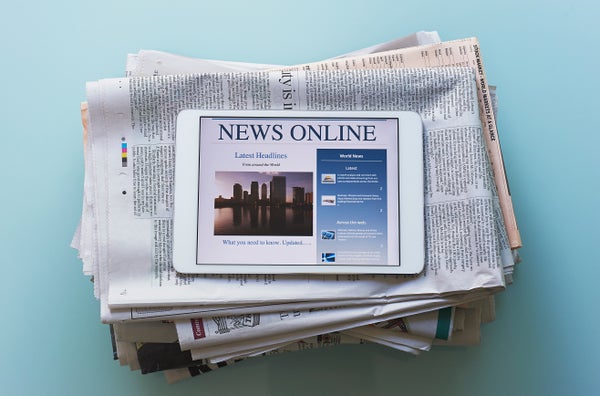Last month, staffers at The Daily Camera in Boulder, Colorado, experienced the latest low point in the American newspaper business: days after mourning the loss of their editor, Kevin Kaufman, their owner (the hedge-fund-owned Digital First Media) announced another round of painful layoffs. The past few decades have been similarly tragic for American local media: longstanding newspapers, big and small, have closed in unprecedented numbers; Americans are turning away from local news sources and towards online and nationally televised programs to learn about politics; and even local television news is focusing on national partisanship and politics, as Sinclair Broadcasting acquires more affiliates.
At the same time, American voters and political elites are more polarized than ever. Republicans and Democrats occupy not only their own ideological camps, but also their own sets of basic facts, regardless of whether those facts are rooted in reality. American politics is trapped in a feedback loop that reinforces polarization in the mass public: media coverage of polarization increases citizens’ dislike of the opposite party, and new research shows that people go beyond relying on party cues as a cognitive shortcut: They consider partisanship a central part of their identity and put effort into expressing it. For example, evangelical Christians tend to identify as conservative Republicans, but recent work shows that partisans actually sort themselves into the religious affiliation that matches their politics.
There are no doubt many reasons for the rise of partisanship, but our research, using voting data from across the country over a four year period, recently uncovered an important one: the loss of local newspapers. As local newspapers disappear, citizens increasingly rely on national sources of political information, which emphasizes competition and conflict between the parties. Local newspapers, by contrast, serve as a central source of shared information, setting a common agenda. Readers of local newspapers feel more attached to their communities. Unless something is done, our politics will likely become ever more contentious and partisan as the media landscape consolidates and nationalizes.
On supporting science journalism
If you're enjoying this article, consider supporting our award-winning journalism by subscribing. By purchasing a subscription you are helping to ensure the future of impactful stories about the discoveries and ideas shaping our world today.
To measure the effect of newspaper closures, we focused on split-ticket voting: when voters cast their ballot in favor of, for example, a presidential candidate from one party and a senatorial candidate from another. In the 2016 election, not a single state elected a Senator from one party and cast its electoral college votes for the opposite-party presidential candidate. We wanted to know if communities that experienced a newspaper closure split their tickets less than others, showing that the loss of localized information contributes to polarized political behavior and outcomes. We collected data on newspapers closures in the United States from 2009-2012, a time when 110 papers were shuttered.
We then measured the percentage of votes cast for the Democratic and Republican candidates for president and Senate in every American county, allowing us to compare the level of split-ticketing in newspaper closure counties to the level in areas that had not experienced a closure. We used a procedure called genetic matching to construct a set of 77 comparison counties. These counties were statistically indistinguishable from the counties that did experience a newspaper closure on a host of important variables: population, income, education, broadband penetration, racial demographics, and more. Counties with a closure split their tickets about 1.9 percent less than the comparison group. This difference is more than enough to swing an election outcome: in 2018, the U.S. House races in Minnesota’s 1st district, Utah’s 4th district and Illinois’s 13th district were all decided by less than that margin.
An additional analysis increased our confidence in our findings. We measured split-ticket voting in the 2012 election for counties that lost a newspaper in 2013 and 2014 and compared these post-2012 closure counties to a comparison set of counties, using the same matching procedure. We found no differences this time, indicating that the loss of the paper itself likely caused the changes we observed in voting behavior.
As newspapers continue to close, these dynamics are likely to get worse. The polarized electorate will continue to turn towards nationalized, partisan media outlets unless local news makes a comeback. Locally-oriented journalists may need to experiment with novel business models, such as the online-only Colorado Sun, in order to survive. There is a serious effort underway to save local news, as shown by the Knight Foundation’s recent $300 million, five-year commitment, and our research shows yet another reason to prioritize these efforts. If people want to fight back against the polarization that has infected our politics, part of the answer may be on their doorstep.
